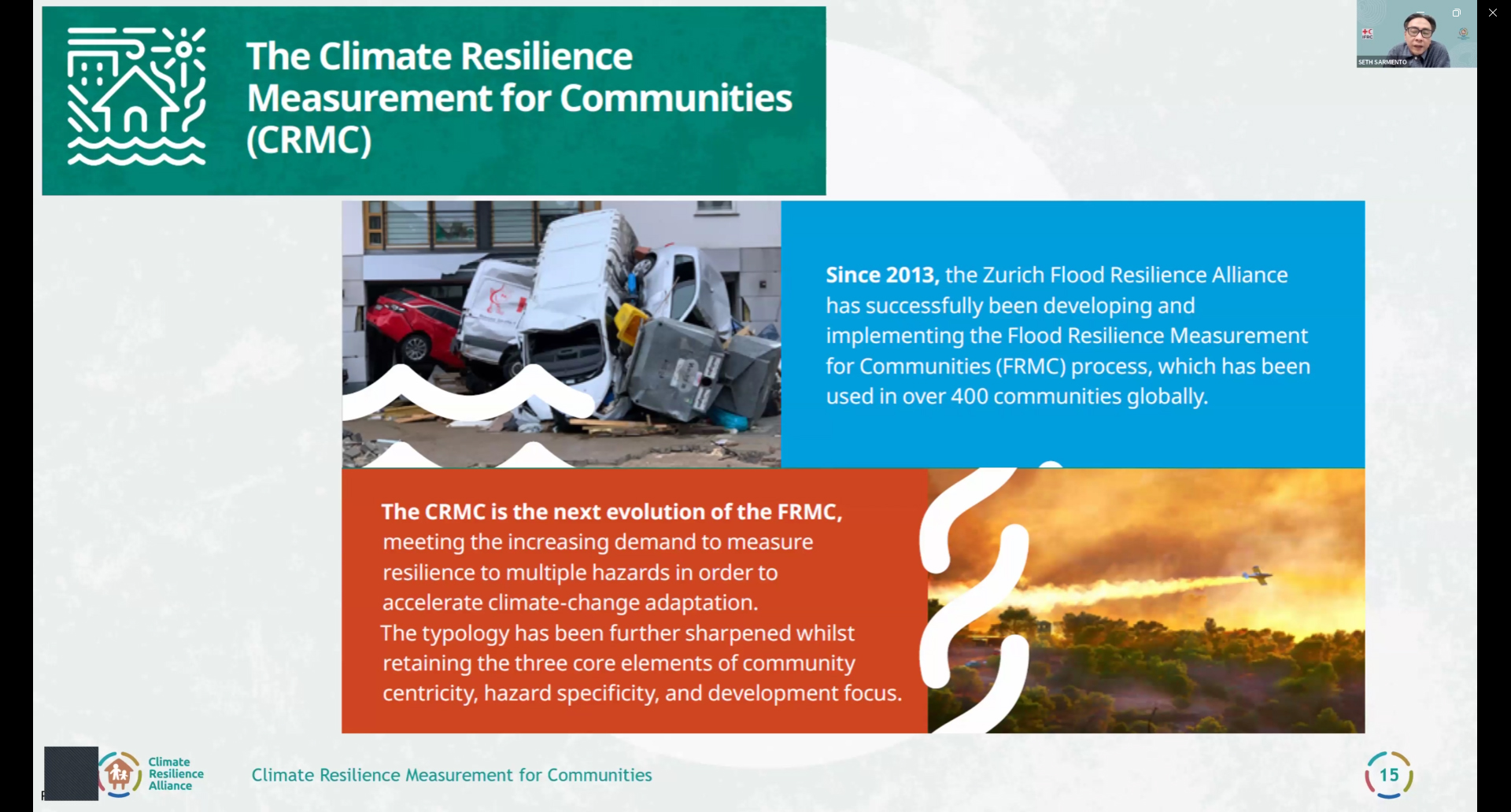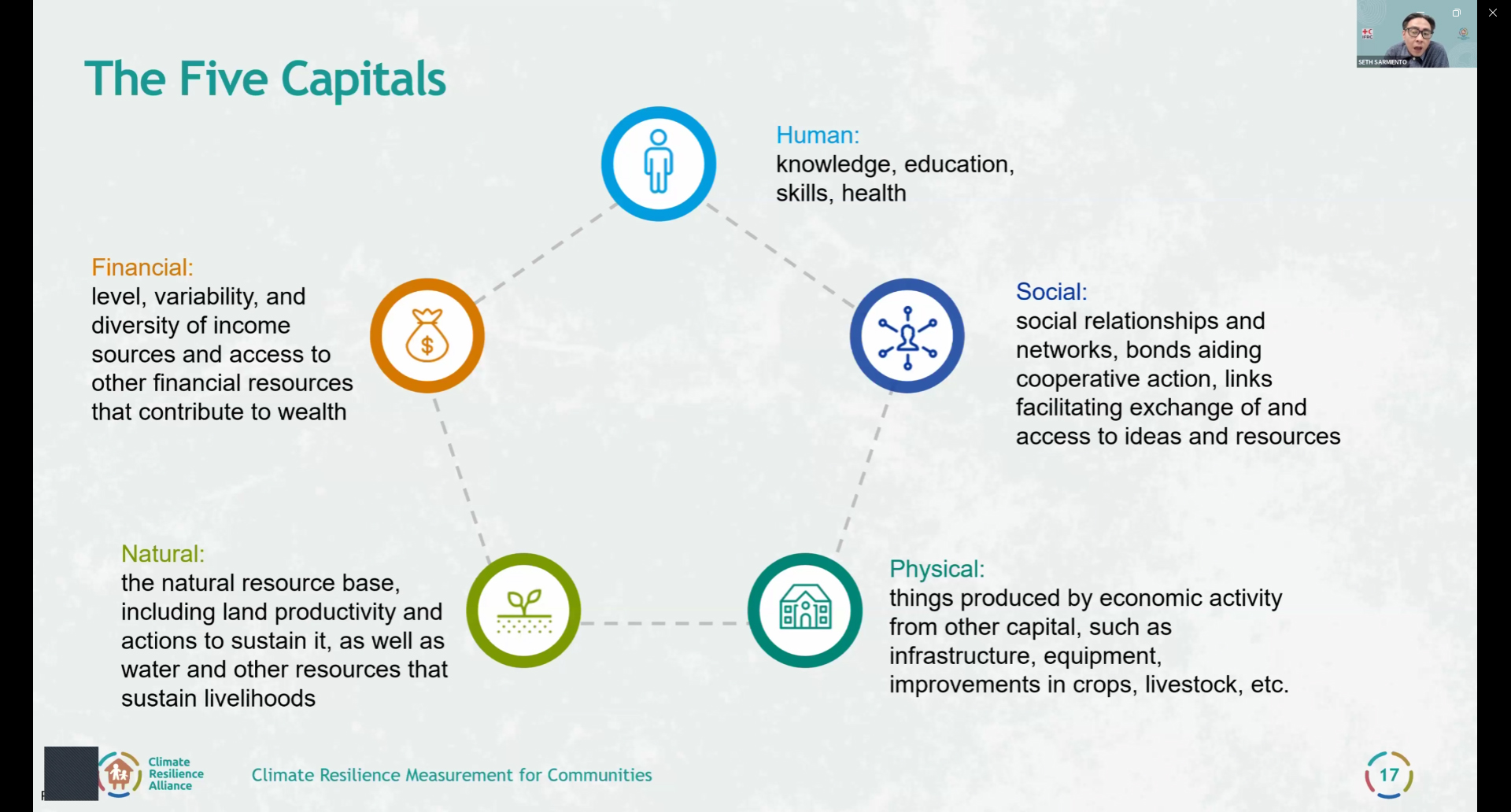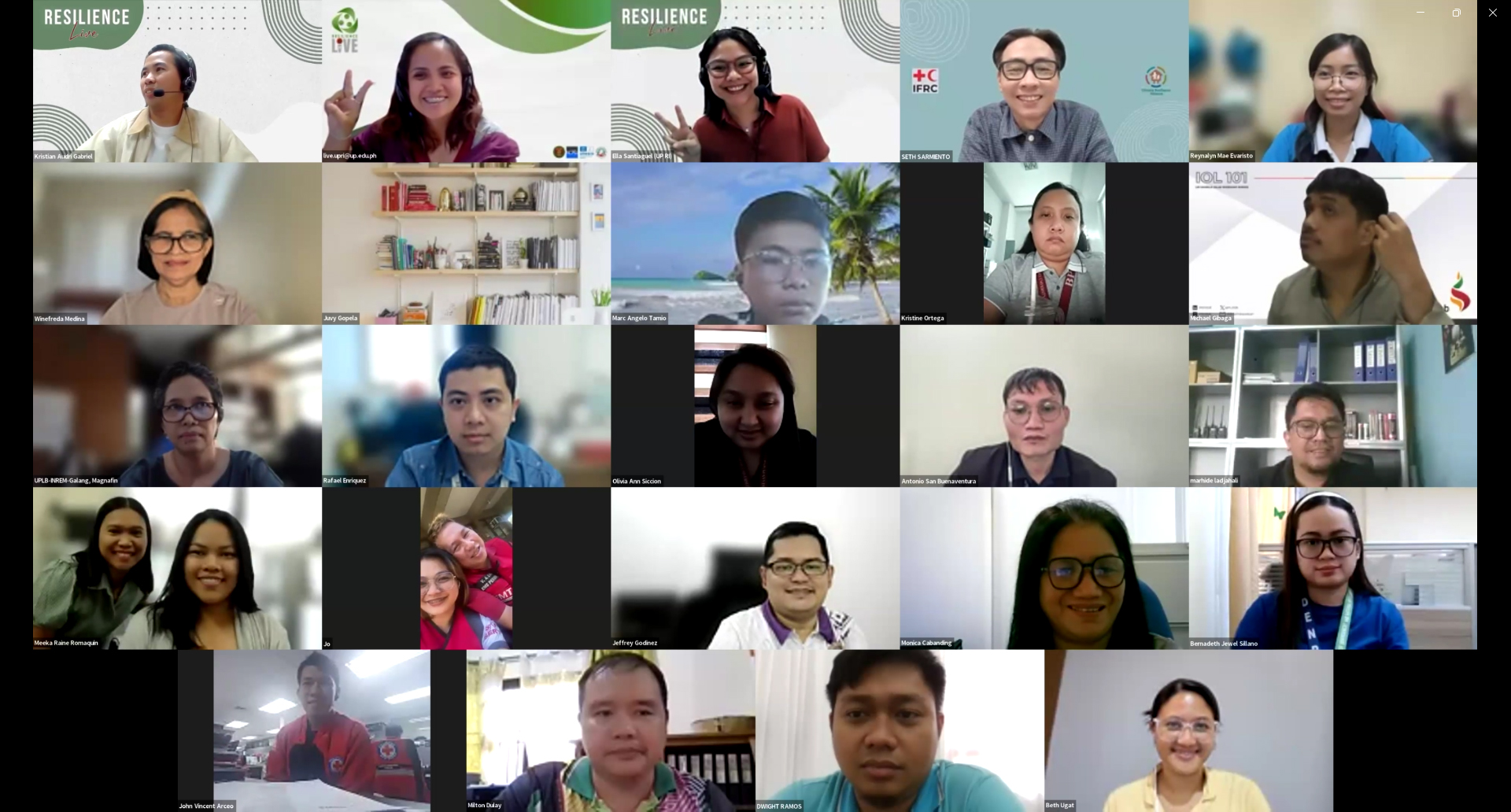By: Kristian Audri Gabriel
In the 16th episode of Resilience Live, Mr. Seth J. Sarmiento, a humanitarian and development worker with the Red Cross, showcased the Climate Resilience Measurement for Communities (CRMC) tool, an initiative under the Zurich Climate Change Alliance.

Communities worldwide face increasing threats from climate hazards, making resilience-building a critical priority. The CRMC framework helps assess and strengthen resilience by evaluating five key capitals: financial, human, social, physical, and natural. Using this approach, CRMC assigns grades from A (best practice) to D (critical gaps), identifying areas that need improvement and guiding targeted interventions.
CRMC employs a Multi-Hazard Framework, analyzing risks from floods, heatwaves, wildfires, and other climate-related challenges. The tool provides a structured methodology that enables communities to measure, understand, and improve their resilience through data-driven insights. By integrating both qualitative and quantitative data, CRMC ensures a holistic assessment of vulnerabilities and strengths within the community.

The CRMC initiative is driven by a long-term vision to enable communities to withstand and recover from climate disruptions. Its ambitious yet necessary goals include positively impacting 70 million people by 2035 and reaching 5.5 million individuals by 2027.
This initiative is not just about numbers—it’s about making real changes in people’s lives. By strengthening resilience in both urban and rural settings, promoting best practices, securing funding for sustainability efforts, and fostering supportive policy environments, CRMC lays the foundation for sustainable adaptation and climate resilience.
Building climate resilience cannot be accomplished in isolation. CRMC fosters collaboration among humanitarian organizations, NGOs, research institutions, and private sector players to drive systemic change. These partnerships play a crucial role in implementing resilience strategies, advocating for policy reforms, and influencing global adaptation efforts. Through cooperation, these organizations create sustainable, impactful solutions that help communities prepare for and respond to climate hazards effectively.
The effectiveness of CRMC is evident in its practical applications. In Mangatarem, Pangasinan, targeted resilience assessments and interventions have resulted in measurable improvements. Similarly, in Dorongan Valerio, Mangatarem, resilience assessments identified critical vulnerabilities, leading to community-led initiatives that significantly improved resilience scores.
These case studies highlight the effectiveness of community-driven adaptation strategies, demonstrating how localized efforts can lead to tangible improvements in resilience levels. The lessons learned from these implementations serve as blueprints for other communities striving to strengthen their resilience against climate risks.
Building for the Future
To ensure that climate resilience efforts translate into tangible benefits, CRMC supports a variety of intervention strategies:
– Enhancing risk awareness through education and community engagement.
– Building local capacities by providing training programs and workshops.
– Improving infrastructure and equipment to bolster disaster preparedness.
– Strengthening local disaster risk reduction (DRR) mechanisms to mitigate future hazards.
Beyond community-level interventions, CRMC is committed to scaling its impact through policy advocacy and securing funding for large-scale resilience projects. By expanding measurement frameworks to new regions and leveraging technological advancements for real-time resilience assessments, CRMC is shaping the future of climate adaptation.
When asked about the most effective ways to communicate resilience measurement results to communities in a way that drives action, Mr. Seth emphasized the importance of translating technical data into clear, easily understandable information. He highlighted that combining this approach with visual aids can help communities better grasp the data and relate it to their own experiences, ultimately fostering informed decision-making. He also encouraged the scientific community to continuously bridge the gap between research and real-world application, ensuring that scientific studies effectively support and empower communities.

Resilience Live Episode 16 featuring Mr. Seth J. Sarmiento is available for viewing here: https://www.youtube.com/watch?v=lHwYSmWfEkQ&t=1019s.
Keep an eye on our Facebook page for all the latest updates!
